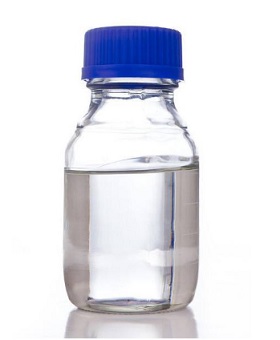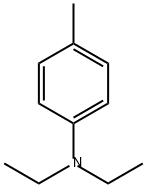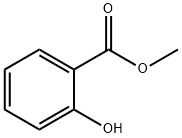Diethylene glycol monomethyl ether
Synonym(s):2-(2-Methoxyethoxy)ethanol;Diethylene glycol monomethyl ether;Methyldiglycol;Methylene diglycol, 2-Hydroxy-2′-methoxy diethylether, 2-(2-Methoxyethoxy)-ethanol
- CAS NO.:111-77-3
- Empirical Formula: C5H12O3
- Molecular Weight: 120.15
- MDL number: MFCD00002871
- EINECS: 203-906-6
- SAFETY DATA SHEET (SDS)
- Update Date: 2025-12-17 09:49:18

What is Diethylene glycol monomethyl ether?
Chemical properties
Diethylene glycol monomethyl ether (DEGME) is a type of glycol ether and is a colorless, stable hygroscopic liquid with an agreeable odor. It is completely miscible with water, ketones, alcohol, ethers, aromatic hydrocarbons and halogenated hydrocarbons. More specifically, it is miscible with acetone, benzene, carbon tetrachloride, ethyl ether, methanol and water. Exposure to diEGBE is unlikely to occur via inhalation unless it is heated.

Diethylene glycol monomethyl ether is a solvent for dyes, oils, fats, waxes, many natural and synthetic resins, nitrocellulose and cellulose acetate. It is used as a high-boiling solvent in such formulations as printing inks ond pastes, stamp pad inks, textile dye pastes, lacquers, and synthetic resin coatings. Its presence in lacquers eases brushability and flow-out, and minimizes lifting of undercoats.
DEGME is an ethylene-series or E-series glycol ether and is sold by Dow under the tradename Methyl CARBITOL™ solvent. DEGME has a high dilution ratio and a low evaporation rate.It is stable under recommended storage conditions and readily biodegradable.
Occurrence
Has apparently not been reported to occur in nature.
The Uses of Diethylene glycol monomethyl ether
Diethylene glycol monomethyl ether is used in textile dye pastes, in lacquer industrial for thinners and quick drying varnishes; solvent for wood stains, hydraulic brake fluid diluent, and as a coupling agent for miscible organic aqueous systems.
Diethylene glycol monoethyl ether is used as a solvent in lacquer, varnishes, and enamels. It is also used in cosmetic products and dermatological preparations and as a solvent in some medicine products. It enhances the percutaneous absorption through the skin and mucosal barriers. It is used in some drugs to enhance absorption.
Diethylene glycol monobutyl ether is used as a solvent in paints, dyes, inks detergents, and cleaners.
Used in the same way as 2-ethoxyethanol where a solvent with a higher boiling point is required.
The Uses of Diethylene glycol monomethyl ether
Diethylene glycol monomethyl ether(DGME) is used as a thermally stable solvent for many substances, such as nitrocellulose, lacquers, varnishes, and dyes.
The Uses of Diethylene glycol monomethyl ether
Diethylene glycol monomethyl ether is an industrial solvent and is also commonly used as a Fuel System Icing Inhibitor (FSII) in jet fuels.
Definition
ChEBI: A hydroxypolyether that is the monomethyl ether derivative of diethylene glycol.
Preparation
A by-product in the manufacture of ethylene glycol monomethyl ether (Arctander, 1969).
General Description
Colorless liquid with a sweet odor. Floats and mixes with water.
Air & Water Reactions
Oxidizes readily in air to form unstable peroxides that may explode spontaneously [Bretherick 1979 p.151-154, 164]. Water soluble.
Reactivity Profile
2-(2-Methoxyethoxy)ethanol is a ether-alcohol derivative. The ether being relatively unreactive. Flammable and/or toxic gases are generated by the combination of alcohols with alkali metals, nitrides, and strong reducing agents. They react with oxoacids and carboxylic acids to form esters plus water. Oxidizing agents convert alcohols to aldehydes or ketones. Alcohols exhibit both weak acid and weak base behavior. They may initiate the polymerization of isocyanates and epoxides.
Health Hazard
DGME is a mild to moderate toxicant via ingestion or absorption through the skin. High doses produced lowering of hemoglobin levels and increased relative kidney weight. Renaldamagemay occurnear the lethal dose. Eye contact of the liquid can result in mild to moderate irritation
LD50 value, oral (guinea pigs): 4160 mg/kg
Preliminary developmental toxicity test in pregnant mice dosed with DGME indicated teratogenicity of this compound (Hardin et al. 1987; Cheever et al. 1988). Earlier, Doe (1984) reported no teratogenic property of DGME when administered subcutaneously in rats up to 100 mL/kg. In comparison, EGME produced effects at 40 mL/kg..
Fire Hazard
2-(2-Methoxyethoxy)ethanol is combustible.
Flammability and Explosibility
Non flammable
Safety Profile
Moderately toxic by skin contact and intraperitoneal routes. Mildly toxic by ingestion. An experimental teratogen. Other experimental reproductive effects. An eye irritant. Combustible when exposed to heat or flame; can react with oxidzing materials. Reacts violently with Ca(OCl)2, chlorosulfonic acid, and oleum. To fight fire, use dry chemical, alcohol foam, water spray or mist, CO2. When heated to decomposition it emits acrid smoke and irritating fumes. See also GLYCOL ETHERS.
Purification Methods
Purify as for diethylene glycol mono-n-butyl ether. [Beilstein 1 IV 2392.]
Waste Disposal
DGME is mixed with a combustible solvent and burned in a chemical incinerator.
Properties of Diethylene glycol monomethyl ether
| Melting point: | −70 °C(lit.) |
| Boiling point: | 194 °C(lit.) |
| Density | 1.023 g/mL at 25 °C(lit.) |
| vapor density | 4.14 (vs air) |
| vapor pressure | 0.2 mm Hg ( 20 °C) |
| refractive index | n |
| Flash point: | 183 °F |
| storage temp. | Store below +30°C. |
| form | Liquid |
| pka | 14.37±0.10(Predicted) |
| color | Clear |
| Odor | Faint pleasant odor |
| PH | 4-7 (200g/l, H2O, 20℃) |
| explosive limit | 1.38-22.7% |
| Water Solubility | Miscible |
| Sensitive | Hygroscopic |
| Merck | 14,6037 |
| BRN | 1697812 |
| Stability: | Stable. Incompatible with strong oxidizing agents. Hygroscopic. Store under nitrogen. |
| CAS DataBase Reference | 111-77-3(CAS DataBase Reference) |
| NIST Chemistry Reference | Ethanol, 2-(2-methoxyethoxy)-(111-77-3) |
| EPA Substance Registry System | Diethylene glycol monomethyl ether (111-77-3) |
Safety information for Diethylene glycol monomethyl ether
| Signal word | Warning |
| Pictogram(s) |
 Health Hazard GHS08 |
| Precautionary Statement Codes |
P201:Obtain special instructions before use. P202:Do not handle until all safety precautions have been read and understood. P280:Wear protective gloves/protective clothing/eye protection/face protection. P308+P313:IF exposed or concerned: Get medical advice/attention. P405:Store locked up. P501:Dispose of contents/container to..… |
Computed Descriptors for Diethylene glycol monomethyl ether
| InChIKey | SBASXUCJHJRPEV-UHFFFAOYSA-N |
Diethylene glycol monomethyl ether manufacturer
BTC pharm India
Bodar Industries
New Products
Indole Methyl Resin tert-butyl 9-methoxy-3-azaspiro[5.5]undecane-3-carboxylate Boc-His(Boc)-OH 2-CTC Resin 4-Chloro-7-tosy1-7Hpyrrolo[2,3-d]pyrimidine 5,7-Dibromo-1H-indole 2,5-dichloro-N-hydroxy-4,6-dimethylpyridine-3-carboximidamide 2,2-Dimethoxy-7-azaspiro[3.5]nonane hydrochloride 4-chloromethyl-5-methyl-1,3-dioxol-2-one (DMDO-Cl) R-2-BENZYLOXY PROPIONIC ACID 1,1’-CARBONYLDIIMIDAZOLE 1,1’-CARBONYLDI (1,2-4 TRIAZOLE) N-METHYL INDAZOLE-3-CARBOXYLIC ACID 4-((2-hydroxyethyl)thio)benzoic acid 1-(TERT-BUTOXYCARBONYL)-2-PYRROLIDINONE Methyl 6-methylnicotinate 3-Pyridineacrylic acid tert-Butyl carbazate TETRAHYDRO-2H-PYRAN-3-OL 2-((4-morpholinophenylamino) (methylthio) methylene) malononitrile 3-(4-morpholinophenylamino)-5-amino-1H-pyrazole-4-carbonitrile 2,4-dihydroxybenzaldehyde 1,3-Diethyl-1,3-Diphenylurea Methyl 2-methylquinoline-6-carboxylateRelated products of tetrahydrofuran



![2-[2-(BENZYLOXY)ETHOXY]ETHANOL](https://img.chemicalbook.in/CAS/GIF/2050-25-1.gif)

![2-[2-(PROP-2-YNYLOXY)ETHOXY]ETHAN-1-OL](https://img.chemicalbook.in/CAS/GIF/7218-43-1.gif)


You may like
-
 Diethylene Glycol Monomethyl Ether (stabilized with BHT) CAS 111-77-3View Details
Diethylene Glycol Monomethyl Ether (stabilized with BHT) CAS 111-77-3View Details
111-77-3 -
 Diethylene glycol methyl ether CAS 111-77-3View Details
Diethylene glycol methyl ether CAS 111-77-3View Details
111-77-3 -
 Diethylene glycol methyl ether, puriss 99%+ CAS 111-77-3View Details
Diethylene glycol methyl ether, puriss 99%+ CAS 111-77-3View Details
111-77-3 -
 DIETHYLENE GLYCOL MONOMETHYL ETHER For Synthesis CAS 111-77-3View Details
DIETHYLENE GLYCOL MONOMETHYL ETHER For Synthesis CAS 111-77-3View Details
111-77-3 -
 Diethylene glycol monomethyl ether CAS 111-77-3View Details
Diethylene glycol monomethyl ether CAS 111-77-3View Details
111-77-3 -
 Diethylene glycol methyl ether CAS 111-77-3View Details
Diethylene glycol methyl ether CAS 111-77-3View Details
111-77-3 -
 Diethylene Glycol Monomethyl Ether - Dgmme, Purity: 99.5%, Technical GradeView Details
Diethylene Glycol Monomethyl Ether - Dgmme, Purity: 99.5%, Technical GradeView Details
111-77-3 -
 111-77-3 Diethylene glycol monomethyl ether 98+View Details
111-77-3 Diethylene glycol monomethyl ether 98+View Details
111-77-3
